Walking to work: Good for the sole
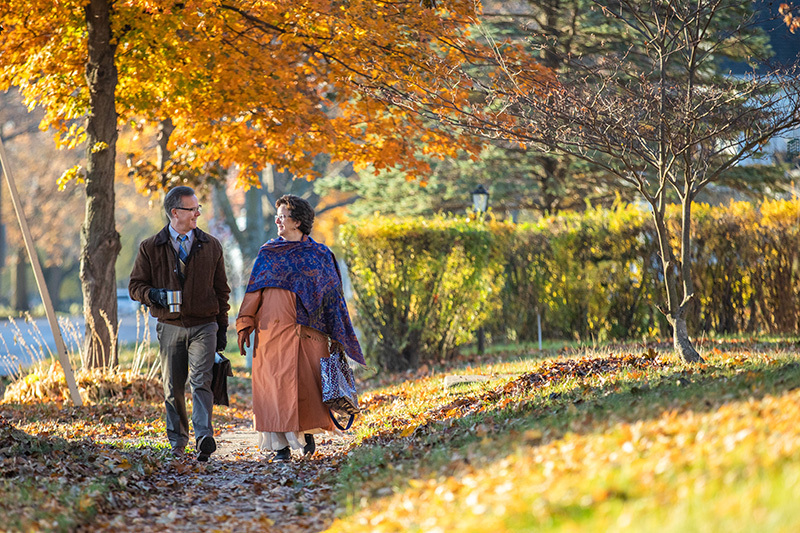
Jonathan and Julie Sturm, music faculty members, walk together to work earlier this week. They wanted to live close enough to campus to feel part of the academic environment. Photo by Christopher Gannon.
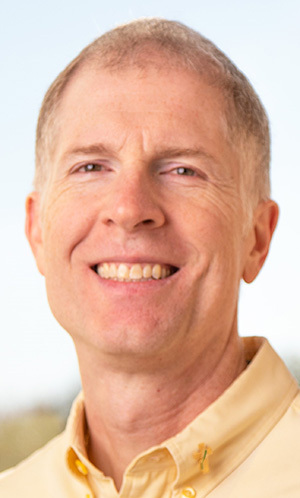
Montabon
Frank Montabon sees the gas prices, looks down and smiles. His preferred mode of transportation is on his feet and he walks to campus every day. The supply chain management professor is among the faculty and staff who walk to work -- rain, snow or shine -- for a variety of reasons and benefits.
Montabon said he and his wife wanted to live close to campus, so they took a map and drew a one-mile circle around the then-future location of the Gerdin Business Building to find their home. It allows him to get daily exercise on his 15-minute trip each way. He has braved many Iowa winter days and nights, but draws the line at wind chills of 40 below.
Human development and family studies professor Kim Greder walks 50 minutes each way from home to her office in LeBaron Hall. Greder is able to combine her love for the outdoors and physical activity, and tries to incorporate walking in as many daily chores as possible.
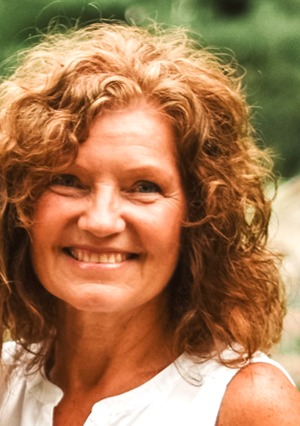
Greder
"The walk is joy, not work," she said.
She said Ames is friendly to walkers and runners, which allows her to get out early and return in the evening. She often uses the time to take in nature and also listens to archived lectures on campus she couldn't attend.
Life in a college town
Morrill Professor of music Jonathan Sturm grew up so close to a college campus he could see his father's office light turn off from his bedroom window. When Sturm tired of the commute from Des Moines to Ames, he wanted to live somewhere close to campus and leave the car parked. He found a house while walking to his car one day, and now enjoys a 12-minute jaunt each way.
"It makes me feel part of this academic environment that I grew up with and loved," he said. "Walking
to work is a way for me to think things through and get rid of stress."
He said those childhood memories superceded some of the realities of living close to campus -- such as the noise and litter on certain weekends each year -- but it is not enough for Sturm to regret the decision.
Sturm walks regardless of weather -- except on days of heavy downpour. He views walking as his responsibility as a global climate citizen.
Walking is a lifestyle

Dave Brotherson
Dave and Dianne Brotherson both work in information technology services and made walking the norm when they moved into their home in 1990. They used to work in the same building and walked together, but now they have different offices and walk separately.
Dianne misses the shared time on the walks, but even then there was one rule.
"Once we crossed Lincoln Way, we were done talking about work," she said.
Dianne's walks also allow her to take in the ever-changing campus throughout the year.
Dave, who bikes to work in the summer, has walked to campus for 37 years. It has been a lifelong practice, beginning with walking to school while growing up in Des Moines.
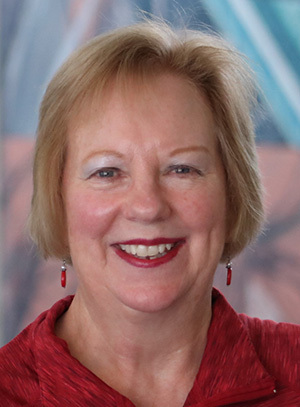
Dianne Brotherson
The Brothersons not only walk to campus daily, but often to many other activities like church services and ISU athletic events. They own an electric car, helping to avoid the recent gas price spike.
"If I have to drive for any reason, it really makes me realize how much I miss walking," said Dave, who estimates he drives once or twice a month. "It is better for you and you can see so much that you miss when driving."
Walking in the extreme
Morrill Professor of agronomy Lee Burras may be an exception to the ISU walkers. Many don't walk when it's blazing hot or a blizzard is howling, but Burras seeks out the extreme weather.
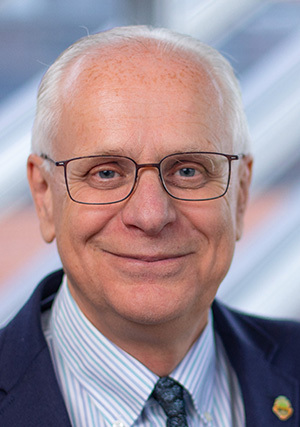
Burras
"Anytime I am out in intense weather, it reminds me that I am alive," he said. "I just enjoy it, and I realize that the weather is not always going to be my friend. I have to work my way through it."
Burras likes when temperatures dip in the fall with a strong west wind because the steam off the cooling towers at the power plant turns to hoarfrost.
"When the wind is strong, I get this sheet of ice that covers me and it kind of cracks me up," he said.
In the spring, he often dodges male red-winged blackbirds attacking to protect their nests.
Injured but undeterred
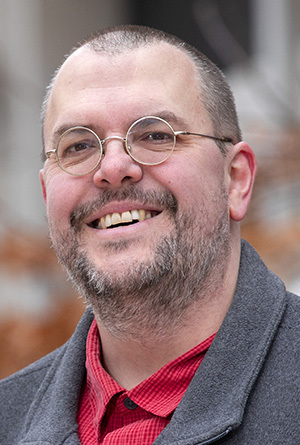
Butler
Walking to campus has become a sometimes dangerous endeavor for Morrill Professor of mathematics Steve Butler since he began in 2011. He has twice slipped on ice and sustained a broken leg and a concussion over a two-year span. So why does he continue? Years of dealing with Los Angeles traffic can be quite a motivator.
"I lived in southern California for eight years when I was doing graduate school and post doc and had to drive frequently between Los Angeles and San Diego," he said. "I have spent so much of my life in traffic, I decided never again."
Even the broken leg didn't stop him from walking. He grabbed a cane and headed out. When Butler isn't dodging ice -- with the help of Yaktrax on his shoes -- he spends most of his walks thinking of his students and how he can better help them understand and excel in his classes.
Two finalists named for senior VP post in operations and finance
Two finalists are interviewing on campus this week for the leadership post in the division of operations and finance. They are:
- David Moore, chief budget officer and associate vice president for financial planning and budgeting, Rutgers University, New Brunswick, New Jersey
- Shawn Norman, associate vice president for planning, budget and analysis, University of Nevada, Reno
Norman was on campus Oct. 31-Nov. 1, and Moore is visiting Nov. 3-4. The finalists are meeting with various campus and community leaders. Their visits don't include a campus forum, but all operations and finance employees have the opportunity to meet them in a one-hour forum.
Former senior vice president for operations and finance Pam Cain retired from the university in September. Heather Paris, associate vice president for finance services, is serving as interim senior vice president for the division.
Related stories
- Submit nominations for operations and finance leadership post, Sept. 22, 2022
- Heather Paris named to operations and finance interim post, July 21, 2022
- Senior VP Cain will retire this fall, May 26, 2022
Beloved 'maidens' sculpture to be replicated
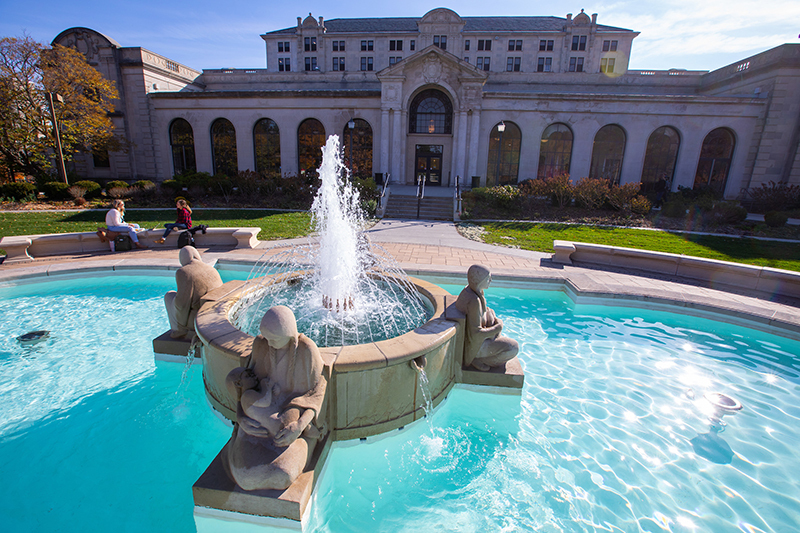
The 80-year-old Fountain of the Four Seasons sculpture will be disbanded this month, with the pieces used to guide the process of replicating Christian Petersen's iconic work. The original maidens will only be displayed indoors in the future. Photo by Christopher Gannon.
Eighty years of rain, ice and wind have eroded the limestone surfaces of the four maidens in Christian Petersen's Fountain of the Four Seasons sculpture, to the point that university museums will have replicas carved while it's still possible to recreate detail from the originals.
Next week's seasonal shutdown of the fountain on the Memorial Union front lawn will be more extensive than usual. The four maidens will be extracted from their concrete niches and, with the terra cotta fountain ring, crated and shipped to the Barre Sculpture Studios in Barre, Vermont, where a carving artist will replicate the sculpture and seating ledges on the pool wall. In the spring, facilities planning and management will oversee a project to remove and replace the concrete fountain pool, which no longer is structurally sound. While all the new components should be in place by early next fall, the water will start flowing again in April 2024.
Fall timeline
- Nov. 7, Fountain turned off
- Nov. 12-18, Workers dismantle sculpture and crate the pieces
- Nov. 19, Large crane transfers crates to semitrailer for transport to Vermont
Be ready for a color change. The new pool will be painted forest green, Petersen's choice for the pool in 1941.
The pool and fountain date back to 1937. Petersen's limestone maidens and terra cotta ring were added in 1941 after the university artist-in-residence proposed the concept to President Charles Friley in 1940.
Sculptures worth saving
University museums director Lynette Pohlman called the four Native American maidens "the most iconic works of art we have at Iowa State."
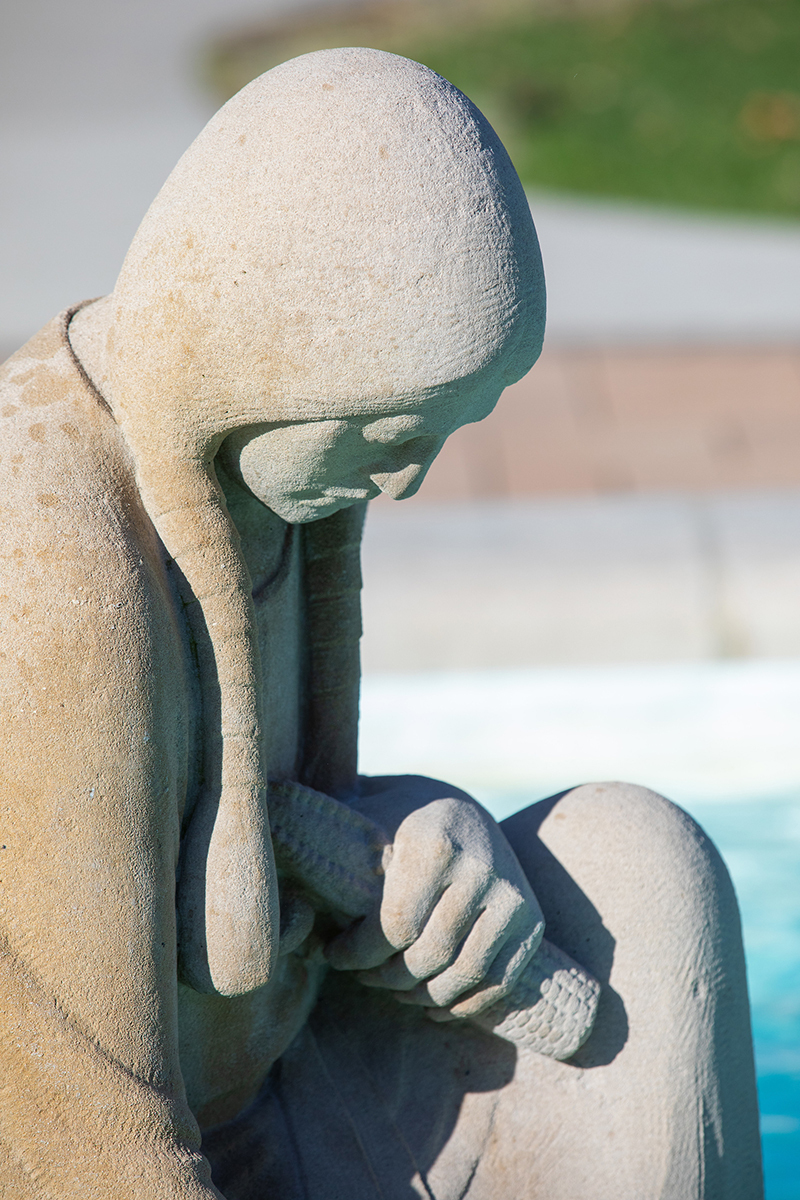
Iowa weather has worn away detail in the maidens' hair and clothing. Photo by Christopher Gannon.
Petersen used the four seasons to be a metaphor for family and the cycle of life. The maidens earned their beloved status, she said, "from many decades in a very public location and hundreds of thousands of filled hearts. They have multiple symbolic meanings to many, many people and colleges."
Which is why it's important to replicate them now, she added.
"I don't think any of us who are alive know what the originals looked like," Pohlman said. "Because they're made of (Indiana) Bedford limestone, they've faded. It literally washes away with water, so details in the sculpture are gone. You accept what it is now. For example, we've lost a lot of Petersen's tooling marks on the maidens, which provided the texture to their clothing and hair."
Pohlman said the replica carver will use the original sculptures as models, with Petersen's 1940 plaster models available as a second reference. And perhaps Iowa State's ace in the hole will be Connecticut-based sculptor and conservator Francis Miller, who has worked with Petersen works of art for university museums for more than 35 years.
"He, perhaps more than almost anyone else, knows Petersen's style," Pohlman said. "So, if you have to make distinctions in Petersen's nuances, I trust him to make those decisions."
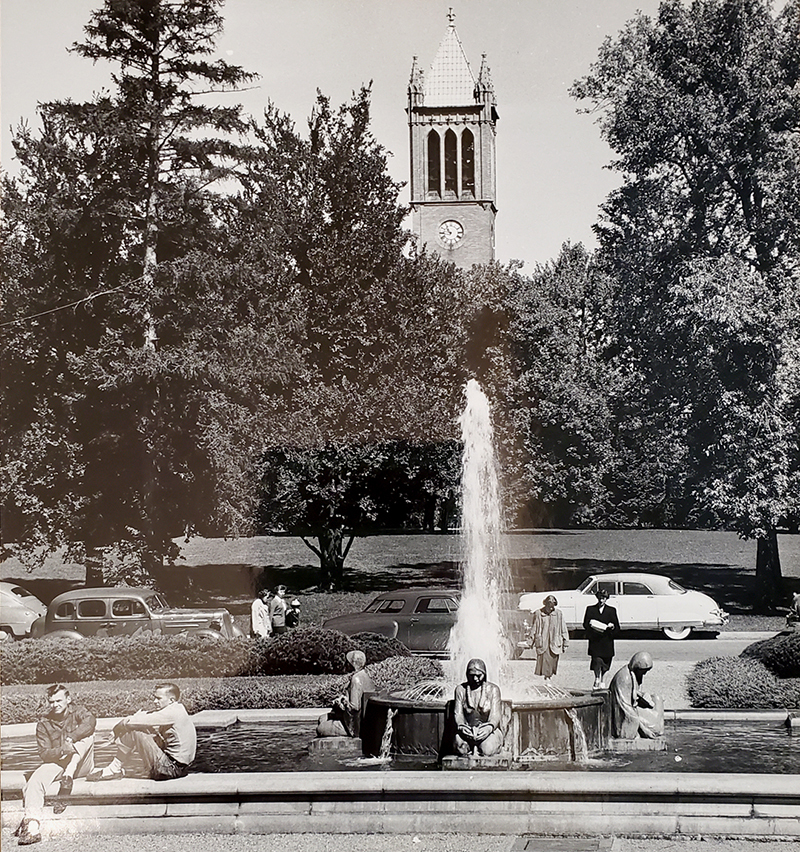
In 1958, the Fountain of the Four Seasons drew students to the MU front lawn, too. Photo courtesy of special collections and university archives.
Miller will not be with the carving artist every moment, but will visit regularly during the process, she said.
"The replicas will be Christian Petersen in his genius and his expression. Someone else's hand is doing it," Pohlman said.
She noted the process isn't far from the Renaissance tradition of artists working for a master in a studio. And while western culture ethics typically argue a copy is less valuable than its original, Pohlman said she'd rather live with a replica of the Fountain of the Four Seasons than not have it at all.
Museums staff actually considered other mediums -- bronze, granite, cast stone, for example -- before choosing Bedford limestone for the replica maidens.
"In the end, we came back to the idea of a faithful replication, doing it as Petersen did it -- even if we have to do it again in 80 years," Pohlman said.
A future for Petersen's originals
Stay up to date
University museums staff is maintaining a website on the replication process.
When the original limestone sculptures come back to campus, they'll be used first in an exhibition in Morrill Hall's Christian Petersen Art Museum. Pohlman said they'll remain a part of the museums' permanent collection with an indoor-only restriction on them. She said a small team is studying options for the original sculpture, including:
- Long-term storage with periodic inclusion in exhibitions.
- Display it at an indoor, academically neutral and public location, in its original configuration and spacing.
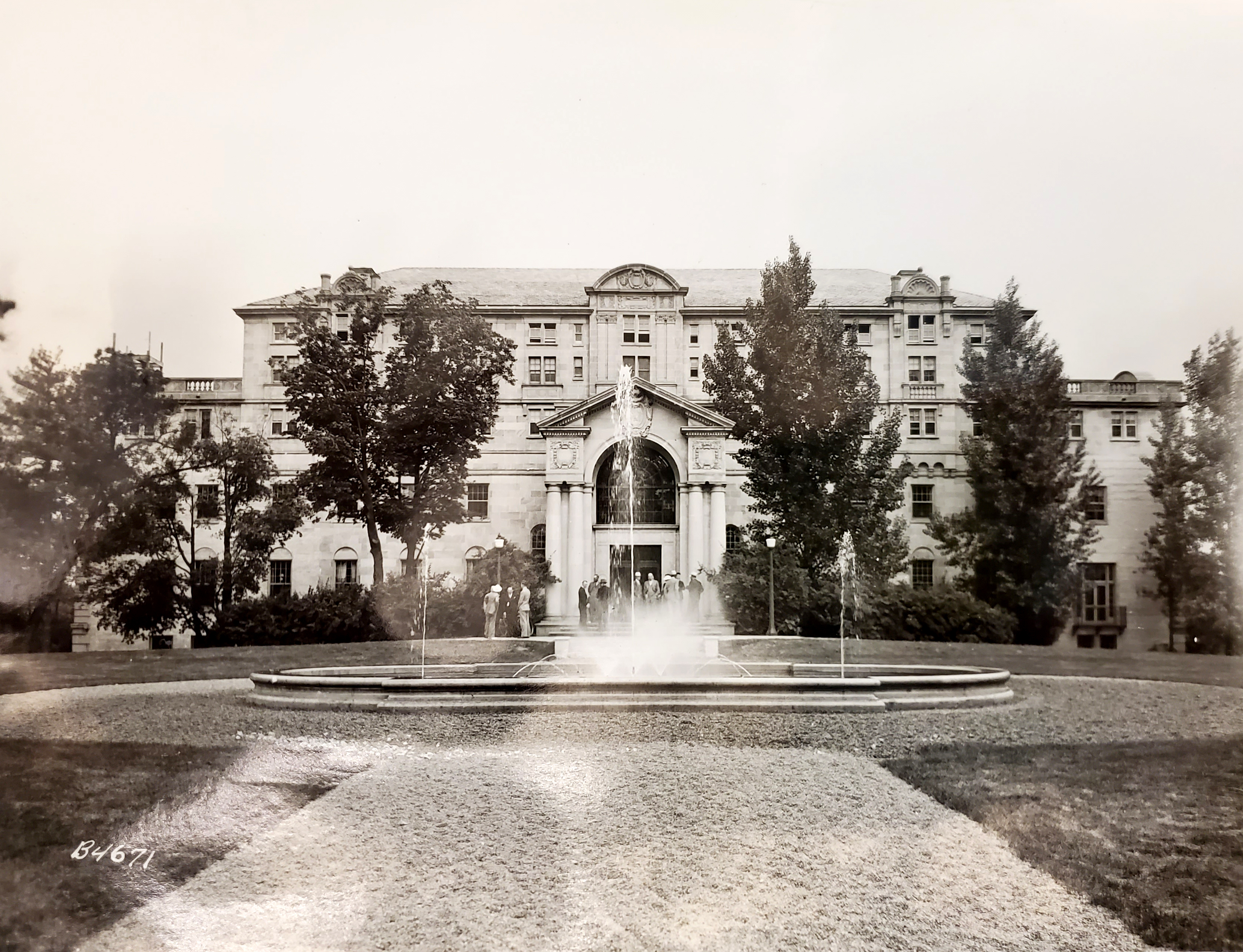
A fountain and pool was completed on the Memorial Union north lawn in 1937. Christian Petersen's sculpture would be added four years later. Photo courtesy of special collections and university archives.
Help WorkCyte project team gauge awareness among employees
The second in a series, the WorkCyte Phase II project team is surveying faculty and staff this month to assess their awareness generally of the software modernization project. The survey is available through Nov. 18 in Qualtrics, and requires about five minutes to complete.
The survey results will serve as a point-in-time barometer of what employees know, to better inform and shape training and communication in the near future, especially prior to the first components going live next June. Survey results will remain anonymous and confidential.
Complete the awareness assessment
The WorkCyte Phase II project will implement Workday Student and Receivables software, retiring legacy systems such as AccessPlus and ADIN. The project team seeks input from all faculty and staff, including those who don't regularly use AccessPlus, ADIN or other legacy systems in their daily work. The more employees who complete the awareness assessment, the more helpful the feedback will be to the project team as it progresses toward implementation.
The first awareness assessment was done in January, and several more are planned as part of implementation of WorkCyte Phase II's multiple phases. Questions may be directed to workcyte_feedback@iastate.edu.
Faculty development requests, MU upgrades on regents agenda
Descriptions and budgets for two more renovation projects at the Memorial Union and for CYTown parking and infrastructure improvements at the Iowa State Center are on the agenda when the state Board of Regents meets next week at the Iowa School for the Deaf in Council Bluffs. The board also will review faculty professional development requests for next year. The full agenda is online, and all public portions of the meeting will be livestreamed on the regents website.
Memorial Union improvements
On the heels of a $10 million project that renovated the top three floors of the MU comes two more projects: A $2.25 million project to remodel 5,000 square feet on the second floor (main level) and a $4.3 million project to renovate 12,000 square feet in the third-floor area between the bookstore and parking ramp. The impacted second-floor area would open up the Col. Pride Lounge to the main east-west corridor and includes spaces formerly used by the U.S. Postal Service, lectures program staff and hotel desk. With higher ceilings, flexible seating and better lighting, it would become a larger, more attractive space for students to meet, study and dine using existing food services.
The third floor project would renovate space vacated by student service offices that moved upstairs last spring. It will create two suites with offices, student lounge and study rooms for Multicultural Student Affairs and Student Support Services. Both programs currently operate in undersized areas in the Student Services Building. As proposed, both projects would begin next summer.
CYTown infrastructure
The $28.5 million plan to prepare lots for the proposed CYTown development will add underground infrastructure, improve 4,200 parking stalls, raise the eastern portion of the lots above Ioway Creek's 100-year flood plain and relocate the CyRide transit hub. Funding will come from the athletics department, university investment income and private gifts. Work would begin in the spring.
Faculty requests for development leave
Iowa State is requesting professional development assignments (PDA) for 41 faculty for fiscal year 2024 (July 1, 2023-June 30, 2024). That represents 2.3% of the ISU faculty. Each of the regent universities has its own eligibility requirements for a PDA. At Iowa State, there's essentially one: All faculty with at least a half-time appointment may apply. Priority goes to accomplished senior faculty, faculty seeking competitive fellowships (such as a Fulbright Award) and those who haven't received a PDA in the previous five years.
More ISU requests
In other business, Iowa State will seek board permission to:
- Sell six acres of land, including five buildings, on the west edge of Nevada, to Frontline Bioenergy, Ames. Iowa State purchased the land in 1998 and developed it. Initially, it was used by the Iowa Energy Center, which closed in 2018, and, via a set of leases involving the ISU Research Park, by Frontline BioEnergy, which used it for a university research project that also has ended.
- For use by the College of Agriculture and Life Sciences, purchase nearly 23 acres of farmland from the Committee for Agricultural Development for $337,175. The property, three miles southwest of central campus, is adjacent to land owned and operated by the student-managed Ag 450 Farm. The purchase would benefit approximately 130 students enrolled each year in the Ag 450 capstone course.
- Sign a 15-year lease with the ISU Research Park for 81,500 square feet in a yet-to-be-constructed Ag Innovation Lab facility in the south part of the park. The Digital Ag program in the agricultural and biosystems engineering department, currently operating at the BioCentury Research Farm, focuses on improving ag productivity and efficiency and understanding the impact of equipment and new technology on crop agronomics. The program needs more space to support its ag industry partners. The space would include offices, lab and testing rooms, high bay and cold storage, and access to shared common and atrium areas. Rent would start at $808,360 per year, adjusted every five years.
Scheduled oral reports during the two-day meeting include:
- Annual report on campus safety, with chief of police Michael Newton and peers, to the campus and student affairs committee, Wednesday, 11 a.m.
- Update on student health centers, with associate vice president of health services Erin Baldwin and peers, to the campus and student affairs committee, Wednesday 11 a.m.
- Summary of an upcoming high school admissions pilot project with the Mississippi Bend Area Education Agency, Quad Cities, and several nearby school districts, with board staff member Rachel Boon, academic affairs committee, Wednesday 1:30 p.m.
- Annual report on economic development and tech transfer, with David Spalding, interim vice president economic development and industry relations, and peers, to the full board, Thursday, 9:15 a.m.
A laugh and a little fright
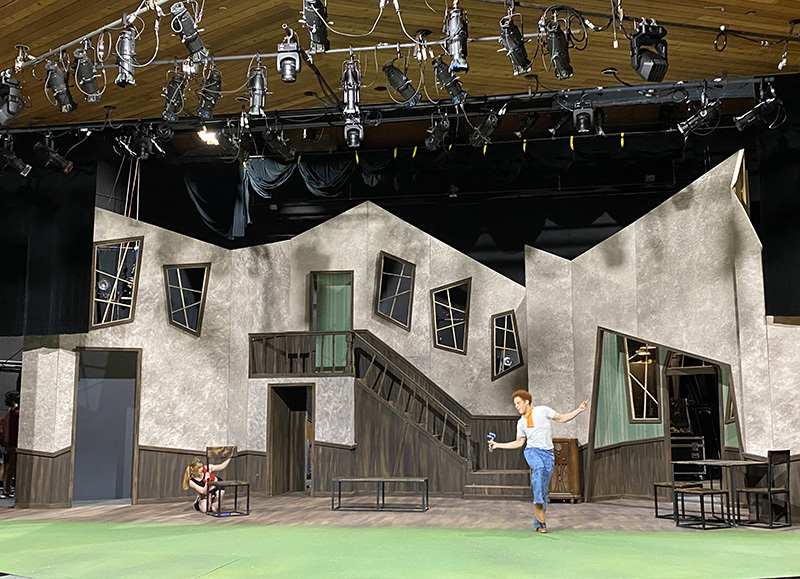
The "Night of the Living Dead! The Musical!" set is prepared for a recent rehearsal. The musical opens Nov. 10 and continues through the weekend. Contributed photo.
Get ready for a rock 'n' roll zombie comedy when ISU Theatre's "Night of the Living Dead! The Musical!" opens Thursday, Nov. 10, in Fisher Theater.
Inspired by the 1968 horror film "Night of the Living Dead," the musical has been called this generation's "Little Shop of Horrors." Facing a growing mob of strange, bloodthirsty creatures, three couples seek refuge in an abandoned house. Will they survive the night?
Recognized for its cultural significance, the original film launched the zombie genre and is preserved by the Library of Congress in the National Film Registry. But those with an aversion to gore don't need to worry. The musical is more goofy than gory.
"This fun, wacky adaptation of George Romero's classic 'Night of the Living Dead,' which essentially began the entire zombie genre, gives us all an opportunity to come back to live theater after these last few difficult years and share what we need most -- a good laugh," said Mary Jo DuPrey, the show's guest director.
Performances are Nov. 10-12 at 7:30 p.m. and Nov. 13 at 2 p.m. General admission tickets are $25 (free for Iowa State students and youth). The show contains adult language and content. For ticket information, visit theatre.iastate.edu.
Picking the brains of an industry expert
With an infectious rock 'n' roll score to belt out, Iowa State student cast members have spent the fall rehearsing and strengthening their vocals. Thankfully, they have the mentorship of a world-class vocal coach -- one who has worked with artists from Jon Bon Jovi to the stars of Broadway's "Hamilton" -- to guide them.
DuPrey, award-winning Los Angeles theater director and a renowned vocal coach, is the 2022 College of Liberal Arts and Sciences Dean's Artist in Residence.
"In the music and theater department, we always want to connect our students to mountaintop experiences that help them grow as people and as performing artists," said department chair Brad Dell. "This is absolutely one of them. For our students to work directly with a guest artist of Mary Jo Duprey’s caliber -- it's simply phenomenal."
Junior Samuel McDaniel, who plays Johnny, said DuPrey's technical expertise transformed his voice and perspective on singing.
"She has provided a better understanding of what to do to continue improving, no matter your current skill level," McDaniel said.
Killer costuming
Excellent costumes and makeup are critical to a musical comedy about the undead. Kelly Schaefer, teaching professor of theater and costume designer, turned to 1960s and 1970s pop culture for design inspiration, including retro TV shows like "Scooby Doo," "The Monkees," "The Brady Bunch" and "All in the Family."
To highlight some characters' transitions from humans to zombies, Schaefer designed costumes in palettes that range from bright and bold to dull and dirty.
